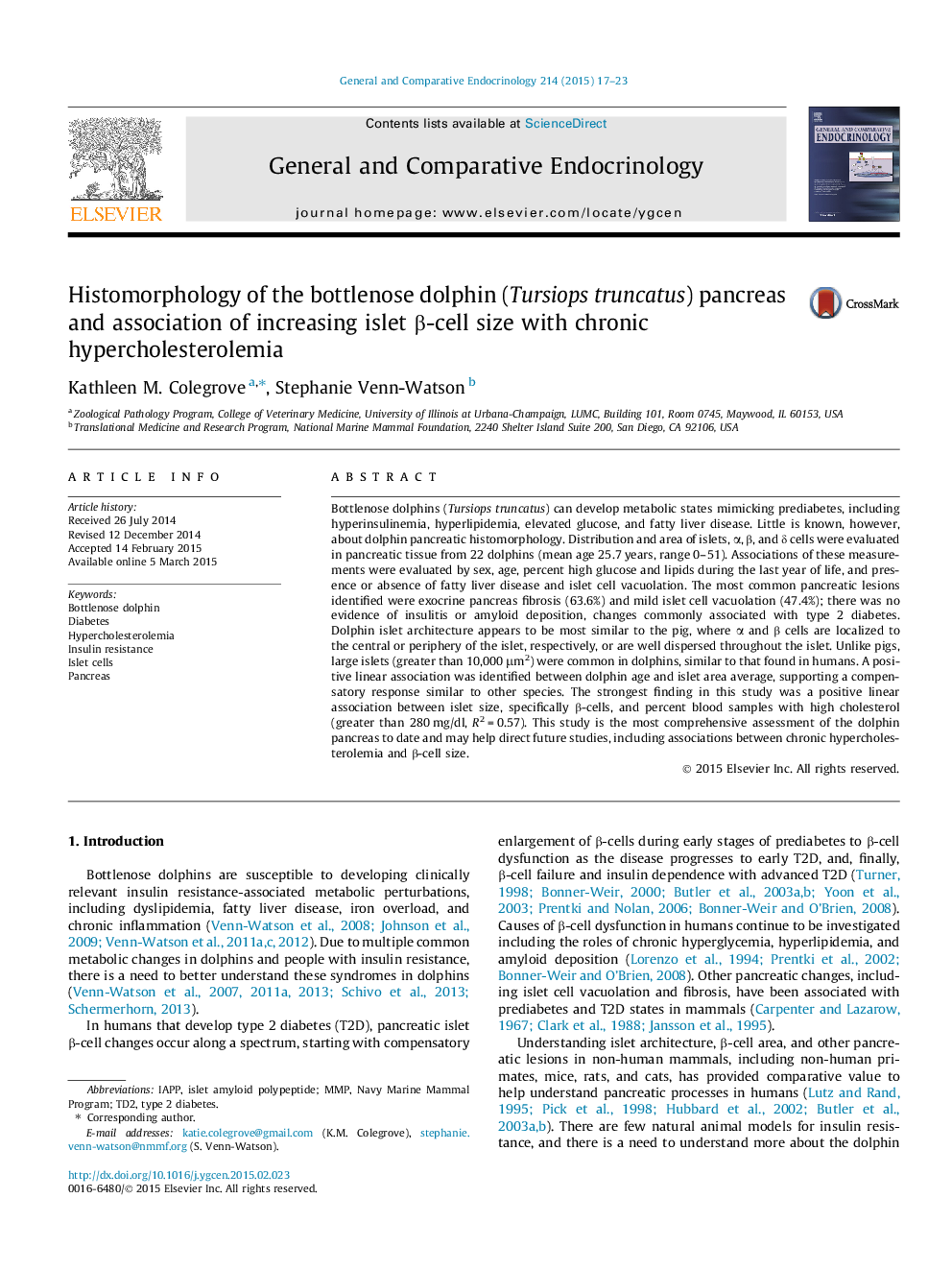| Article ID | Journal | Published Year | Pages | File Type |
|---|---|---|---|---|
| 2799971 | General and Comparative Endocrinology | 2015 | 7 Pages |
•Dolphin pancreas islet architecture is a cross between that of swine and humans.•Dolphins with likely prediabetes do not develop insulitis or amyloid deposition.•Increasing β-cell islet size was associated with increasing cholesterol values.•This study is the most comprehensive assessment of the dolphin pancreas to date.
Bottlenose dolphins (Tursiops truncatus) can develop metabolic states mimicking prediabetes, including hyperinsulinemia, hyperlipidemia, elevated glucose, and fatty liver disease. Little is known, however, about dolphin pancreatic histomorphology. Distribution and area of islets, α, β, and δ cells were evaluated in pancreatic tissue from 22 dolphins (mean age 25.7 years, range 0–51). Associations of these measurements were evaluated by sex, age, percent high glucose and lipids during the last year of life, and presence or absence of fatty liver disease and islet cell vacuolation. The most common pancreatic lesions identified were exocrine pancreas fibrosis (63.6%) and mild islet cell vacuolation (47.4%); there was no evidence of insulitis or amyloid deposition, changes commonly associated with type 2 diabetes. Dolphin islet architecture appears to be most similar to the pig, where α and β cells are localized to the central or periphery of the islet, respectively, or are well dispersed throughout the islet. Unlike pigs, large islets (greater than 10,000 μm2) were common in dolphins, similar to that found in humans. A positive linear association was identified between dolphin age and islet area average, supporting a compensatory response similar to other species. The strongest finding in this study was a positive linear association between islet size, specifically β-cells, and percent blood samples with high cholesterol (greater than 280 mg/dl, R2 = 0.57). This study is the most comprehensive assessment of the dolphin pancreas to date and may help direct future studies, including associations between chronic hypercholesterolemia and β-cell size.
